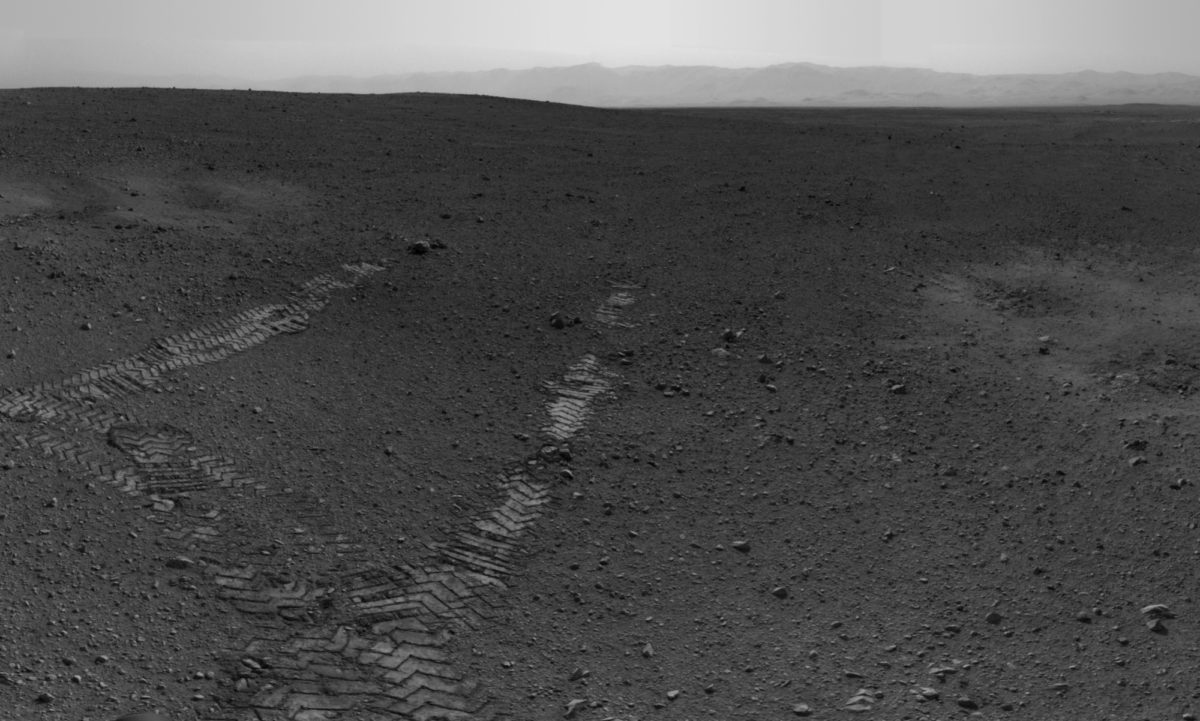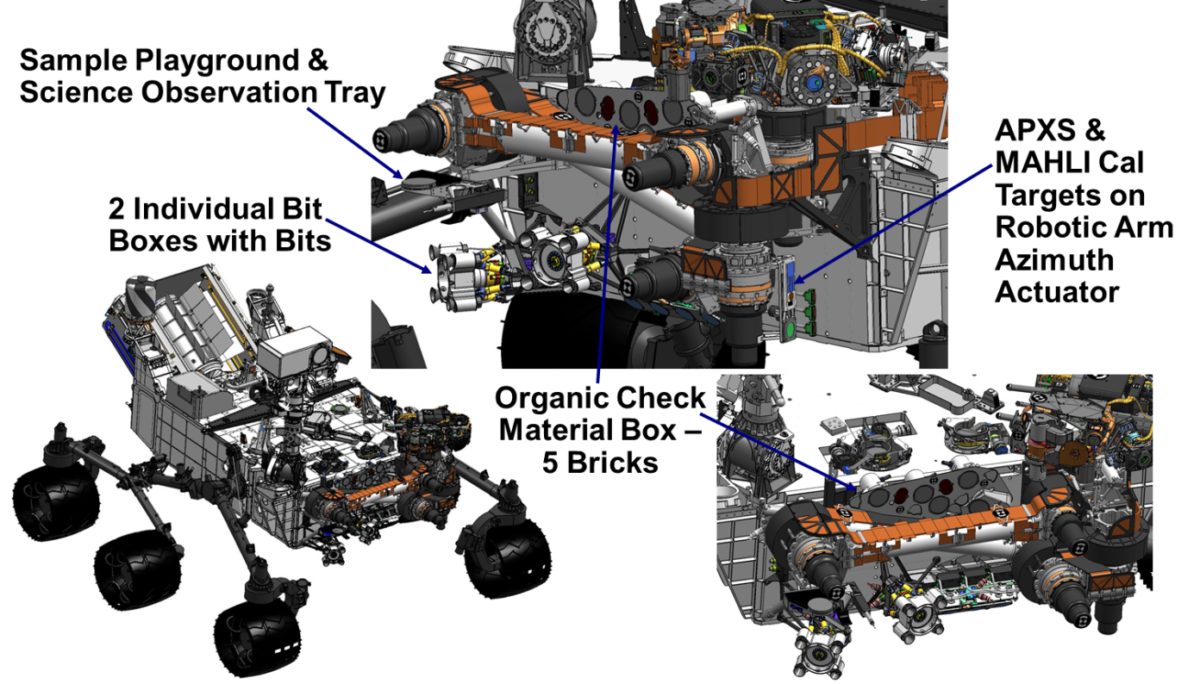Daniel Limonadi • Aug 22, 2012
Sampling Mars, Part 4: Commissioning the Rover and Sampling System
All right, now that you know a little about the hardware and science instruments, and some of the key general challenges associated with doing sampling operations on Mars, let’s talk about how we are commissioning the rover and, in particular, the sampling system after landing on Mars....
Due mainly to the increased complexity of the instruments and engineering systems (especially the SA-SPaH subsystem) on the Curiosity rover, but also taking advantage of the longer expected life, we will be spending a longer time than past missions getting through system commissioning activities after we land on Mars. Most past Mars lander missions have had relatively quick commissioning phases. Opportunity and Spirit were basically commissioned once they drove off their landers on sols 7 and 12, respectively. (A sol is a Mars day, which is 24 hours and 39 minutes long.) For Phoenix, it was about 3 weeks. The short commissioning time for these missions was partly driven by the fact that these missions had short primary mission durations of only 90 sols, so they were in a big hurry to get going.
Curiosity, on the other hand, has a minimum required lifespan of 669 sols, or 1 Mars year. For perspective, orbiting spacecraft can take 2 months or more to complete a careful checkout of their instruments and engineering systems. It really depends on the complexity of the system; on how much checkout needs to get done in space versus what could get done before launch; and on how much time pressure there is on the mission. Anyway, back to Curiosity…
The commissioning phase for Curiosity is spread over three main bins of activities. Two of them are part of the formal early “Characterization Activity Phase” (CAP), and one of them is a more broad and stretched-out-in-time bin we call “First Time Activities” (FTAs). CAP is broken into CAP 1A and CAP 1B, CAP 2A and CAP 2B. Broadly speaking, CAP 1 checks out most of the rover and CAP 2 checks out specific contact science and sampling system functionality and performance.
Together CAP 1, 2 and a nominal science “intermission” period between them are expected to take around 30 sols, but might go quicker or slower depending on how things unfold on Mars and how the rover performs. While there is science sprinkled throughout CAP, now that CAP 1B is complete we will be dropping in more and different flavors of targeted science activities into the remaining engineering checkout activities. So while we have a long commissioning phase, we won't wait for it to be over to begin science activities.
CAP 1A was focused on establishing basic health and safety of the spacecraft, most notably the health of the UHF link to Mars Odyssey and Mars Reconnaissance Orbiter, establishing the X-band high gain antenna link to Earth for morning command sessions, deploying the remote sensing mast, and taking initial pictures of the surroundings. CAP 1A was complete at the end of sol 4. We performed CAP 1A on the version of software that the spacecraft completed Entry Descent and Landing on.
The transition to CAP 1B was kicked off by booting into and checking out the surface software load (loaded in late cruise into flight computer memory, but we held off booting into it until after the initial core system checkouts on Mars). After transitioning to the new flight software load, which we completed on sol 8, we began to perform basic functional tests of more of the instruments and remaining mechanisms on the new surface flight software image. We finished that today with our first drive.

There is an “intermission” that the science team will have between CAP 1B and CAP 2. The intermission will include initial drives away from the landing site, more in-depth ChemCam and Mastcam characterization and science observations, and the first SAM atmospheric science experiment. The total length of this period depends on how long the science team wants to drive before carrying on with sample chain checkout activities. The key flavor difference of intermission is that science is more in the driver’s seat and not trying to squeeze in between higher priority engineering checkout activities that have priority during CAP 1 and 2. Our current plan is to complete a significant fraction of our drive to Glenelg during intermission.
CAP 2A is focused on checking out enough of the SA-SPaH subsystem, primarily the robotic arm, to allow us to green-light contact science activities after it is done. We have to confirm that the placement accuracy of the arm after landing is in line with our expectations. We will take high-resolution images of the external and internal surfaces (where accessible) of the turret-mounted hardware. We'll place APXS and MAHLI on their calibration targets to help finish checking out those instruments. This will take around 4 sols. When we are done, the science team can chose to do contact science, placing APXS and MAHLI on rock or regolith targets.
Although the Dust Removal Tool (DRT) is part of the contact science suite of the rover, DRT use will likely not be allowed yet because there is some residual testing that needs to get done on Earth before we allow use on Mars, and the rover test bed schedule shows us not getting to those final Earth tests until late in August or early September. Yes, we are still checking out some of our system functionality on Earth, because we were constrained enough in resources during cruise that we had to prioritize landing and non-sampling activities and delay preparations for sampling. This is another place where the project took advantage of the expected long life of the mission to manage the overall workload. In addition, we’ve had some unexpected technical issues with the system, as is often the case when doing new things. Working through these issues has sidetracked some of the team and contributed to the delay. It is nice to have the time to make sure we are ready to go, and to ensure as much as we can that we know how to safely and reliably operate this complicated part of the mission.
CAP 2B is the last CAP activity. It's focused on some core activities we need to do before we do our first surface sampling activities. It includes a second round of robotic arm checkout, most notably preloading the drill onto the Organic Check Material assembly mounted to the front of the rover. After the initial preload is performed, the rover will wake up roughly every 2 hours during the night and read an embedded force / torque sensor inside the arm to characterize how the preload changes during the thermal cycle. CAP 2B should last around 2 sols. The reason we preload the arm and drill against the rover body itself is to make sure we understand how just the rover system behaves during a thermal cycle on Mars. (As I explained in my last post, the aluminum body of the rover and the titanium arm expand and contracts several millimeters with the daily temperature swings.)

During CAP 2B we also do a detailed imaging checkout of the internal and external surfaces of the turret hardware, most notably CHIMRA. This is important in order to capture the “clean” beginning-of-mission reference state of the hardware and to make sure everything looks nominal. The last thing we do during CAP 2B is to place the arm into two of the poses where we spend a lot of time vibrating to move sample around. We run the CHIMRA vibration actuator through a frequency sweep in each pose in order to confirm that the system dynamics (i.e. frequency response of the arm / turret system when being vibrated) on Mars are within our design criteria. Depending on the results of the dynamic characterization we might chose to change the nominal operating frequency of the vibration actuator, but we don’t expect to have to make any adjustments.
CAP activities are generally pre-canned and well tested on Earth prior to execution on Mars. Once we are done with CAP, we move on to a more nominal tactical and strategic planning cycle for surface operations on Mars.
Due to the complexity of Surface Sampling and Science (SSS) activities, a large fraction of fully checking out SSS functionality is done after this transition to nominal surface operations, under the guise of First Time Activities (FTAs). FTAs are complex. They involve routine activities, like contact science, scooping, and drilling, as well as things we may rarely or never do on Mars, like changing out a drill bit. We treat the first time we do these things as a special event, essentially like a residual checkout activity. We make sure all our relevant testing and other preparations are complete and that the project management agrees we are ready to execute the activity safely.
Basically every major sampling function like the first time we scoop, the first time we drill a rock, the first time we drop off a sample, is classified as a FTA. In addition, we have FTAs that lead up to other FTAs. For example, before we do our first contact science and sampling activities on Mars, we will repeat our arm preload test from CAP 2, but this time on Martian terrain. We'll do this in order to characterize how arm loads change and how the mobility system behaves during the diurnal cycle with the arm actually touching Mars. This activity helps us understand what kind of risk we might be taking by placing an instrument on a rock in the event there is a fault that leaves the arm and instrument in contact with the rock.
There is a first time activity plan for SSS that lays out all of the activities, the dependencies, and rough durations for all of the entrees. We will be executing this plan starting after CAP. I will leave the details of the plan to future blog entrees (and/or other media releases).
Well, that wraps up our initial foray into the Curiosity Surface Sampling and Science system. Hopefully this quick hardware overview, description of some of our design and operations challenges, and description of how we will do initial commissioning of the system has helped you understand this complex machine a little more. The team and I are looking forward to actually executing our plans and sharing real results with you!In the meantime, we’ll all need to be patient as we carefully checkout this complicated system and its interactions with Mars.
I also want to send a shout out to Michael Scruggs, Guy Webster, and Emily Lakdawalla, who helped me by doing a review of this blog to help make it more readable and catch general mistakes. Thank goodness for great editors!
Per Aspera Ad Astra
The Time is Now.
As a Planetary Defender, you’re part of our mission to decrease the risk of Earth being hit by an asteroid or comet.
Donate Today

 Explore Worlds
Explore Worlds Find Life
Find Life Defend Earth
Defend Earth


